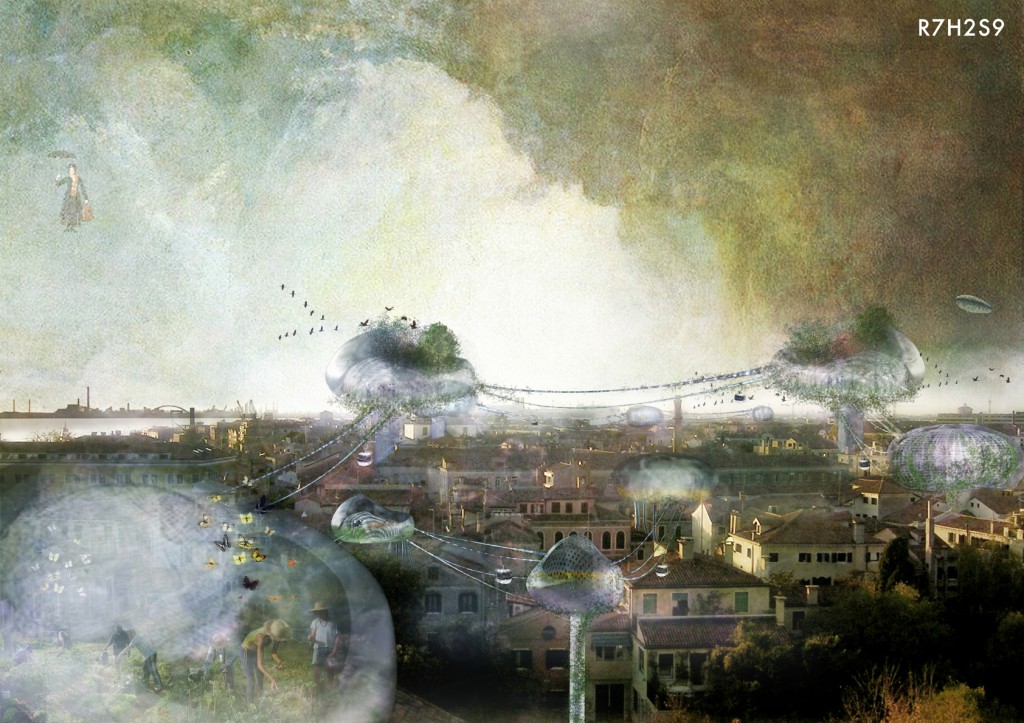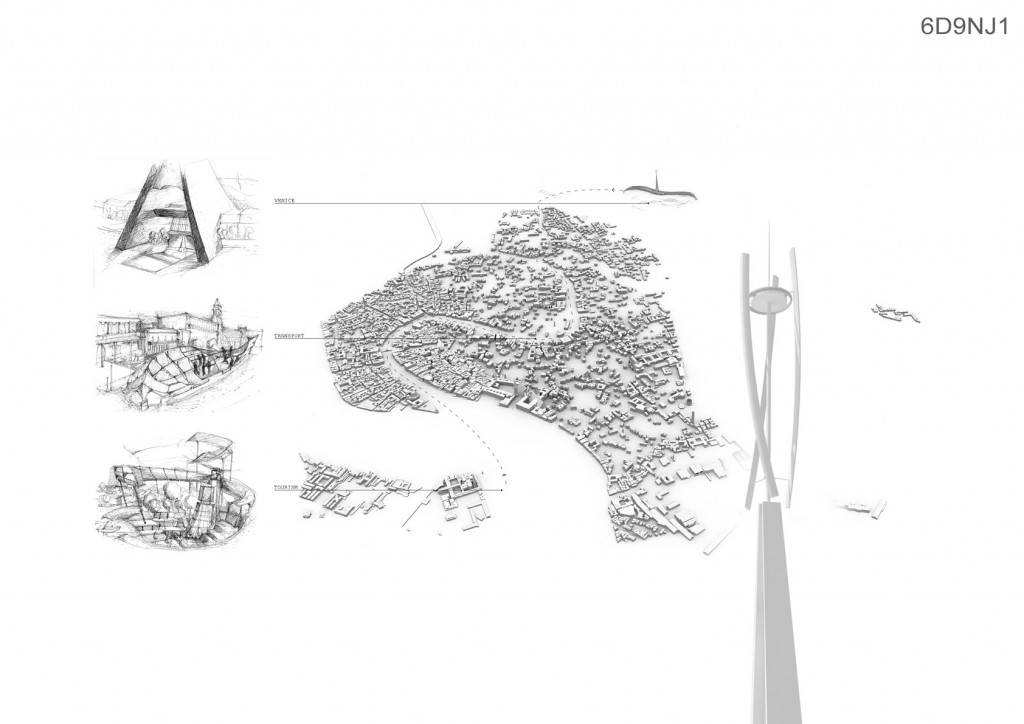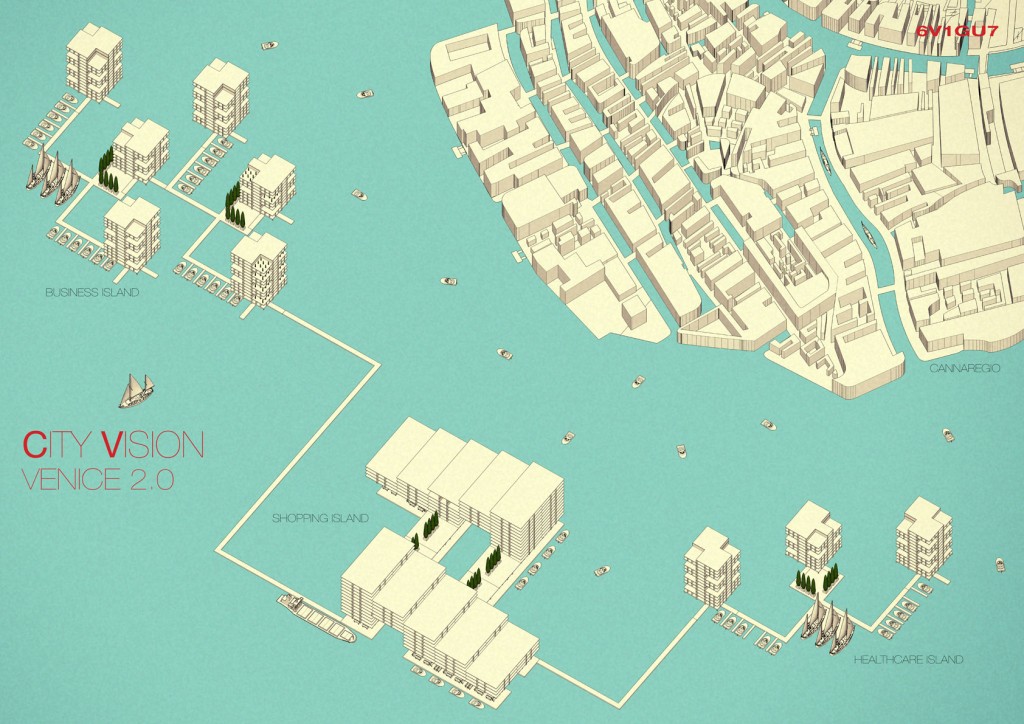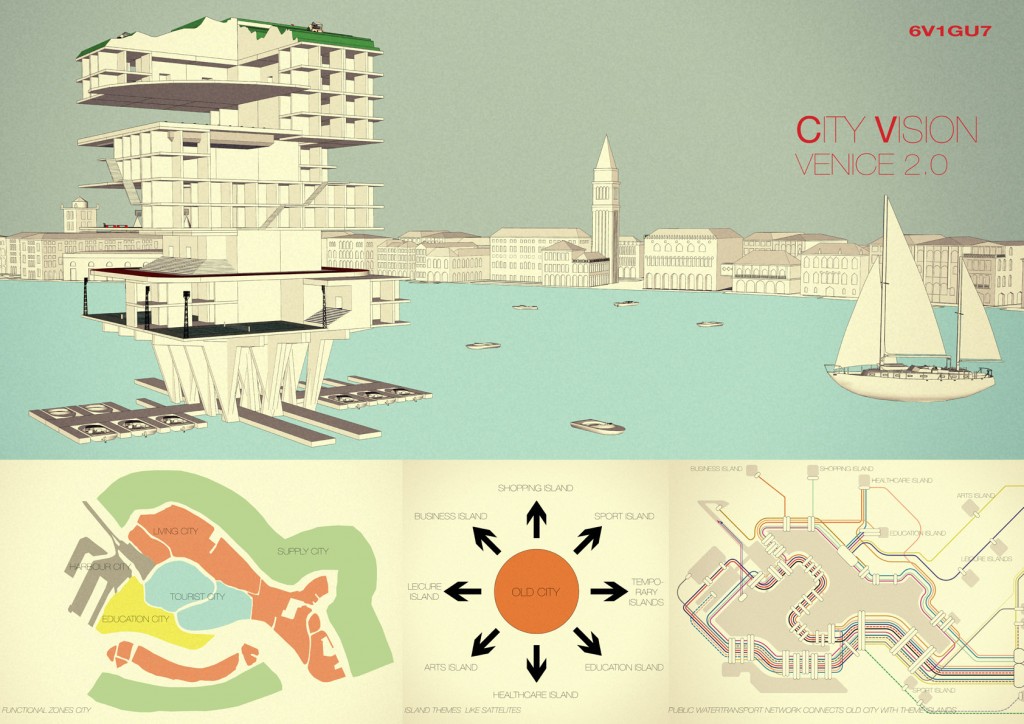Info:
Title: Venice 2.0 The City in the 21st century - Code: 6V1GU7Contest: Venice / 2011
By: W. Middeldorp
Views: 4287 Likes: 1
Votes:
BJARKE INGELS5 NERI OXMAN7 ELENA MANFERDINI7 MARIA LUDOVICA TRAMONTIN3 BOSTJAN VUGA45.2
Venice 2.0 The City in the 21st century
Venice 2.0 The City in the 21st century Problems The contemporary city of Venice is a famous city. A city of imagination. A city that everybody should visit at least once in a lifetime. A city that welcomes 18 million tourists a year. A city with great institutions of art and knowledge. The city of the famous Biennale. The city of world famous buildings and architecture. That are most of the time the first things that comes to your mind when you think of Venice. Positive things about the city, through the eyes of a tourist. But there is actually a flip side to all this. There are several major problems in the city of today. Most of the problems directly affect the local population in the old city.
The amount of population in the old city is declining for years. In the last couple decades young people and families moved away through the mainland. Mostly because of the lack of facilities and employment, the limited infrastructure and the isolated location of the old city. Nowadays only 62.000 people live on the actual island of Venice. Due the lack of young people, the average age of the habitants is rising.
Than there are the problems with the level of the water in the Venetian lagoon, and the sinking process of the old city. The location of the city on the waterside was once the key for power and success, but finally it became a threat for her existence. Fortunately the work for the Moses project is in progress, to protect the city in the future for floods.
Also the massive tourism is a threat for the existing city. Local authentic shops, such as greengrocers, bakers, and butchers are more and more replaced for tourist shopping facilities, such as souvenirs shops, mask shops and expensive fashion stores.
The population of the city is getting older, the buildings are in decay. The city is aging, and there is no young blood to give it new energy.
Proposal
To give the old city in decay new energy, an update is necessary. Starting with Venice 2.0! How we can attract young people and families to the city? Important is to make the city once again attractive for living. That’s why the city needs new facilities, which are attractive for young people, students and family life. There is no space for such facilities in the existing city. Besides that, why affect a beautiful, in a couple centuries formed urban structure? So why not build a couple islands, divided in several themes around the old city?
In the plan proposal, the city can be divided in a couple zones. You have the tourist zone, which includes the highlights of the city and all the tourist facilities, than there is the living zone, were the local population is living, with its local facilities and shops, than there is the education zone, were the universities, student homes and art institutions are based. The area around the existing city is the supply zone. In this zone several islands are located, which can be reached from the city by individuals boat and public water transport. The theme islands for example provide in shopping, working, sporting, relaxation, entertaining, medical healthcare and education. In this zone also temporary islands can be build, for particularly events or seasons. The idea is to build these islands modular, so they can easily changed en extended in the future. The use of basic prefab elements, which are sustainable and lightweight makes it flexible and gives a lot of possibilities and variations.
Off course you can go to the mainland for these facilities, but those have less relation to the actual island of Venice. These theme islands are close the city, easy accessible by boat from the old district. In this way, the new together with the old, can form again one inspiring urban structure for living.
Info:
Title: Venice 2.0 The City in the 21st century
Time: 7 giugno 2011
Category: Venice
Views: 4287 Likes: 1
Tags: Adriatic Sea , Moses , Piazza San Marco , Population , Scripps Institution of Oceanography , Tourism , Venetian Lagoon , Venice








